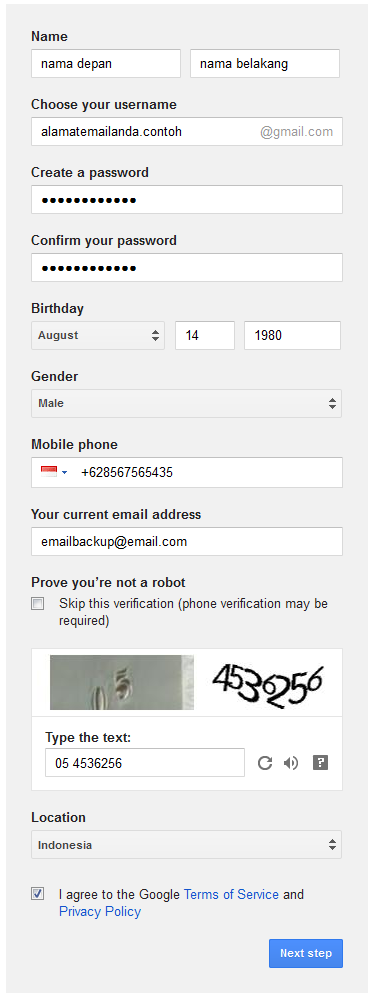Assalamualaikum wr.wb
In this post I would like to give the last review
from the book “THE POWER OF HABIT”.


Check this bellow!!
PART III THE HABITS OF SOCIETIES
CHAPTER
8 - SADDLEBACK CHURCH AND THE MONTGOMERY BUS BOYCOTT
How
Movements Happen
It
was Thursday, December 1, 1955, in Montgomery, Alabama, and she had just fi
nished a long day at Montgomery Fair, the department store where she worked as
a seamstress. The bus was crowded and, by law, the fi rst four rows were
reserved for white passengers. The area where blacks were allowed to sit, in
the back, was already full and so the woman— Rosa Parks— sat in a center row,
right behind the white section, where either race could claim a seat. Soon, all
the rows were filled The bus driver, James F. Blake, seeing the white man on
his feet, shouted at the black passengers in Parks’s area to give up their
seats, but no one moved.
At
that moment, though no one on that bus knew it, the civil rights movement
pivoted. That small refusal was the fi rst in a series of actions that shifted
the battle over race relations from a struggle fought by activists in courts
and legislatures into a contest that would draw its strength from entire
communities and mass protests.
Over
the next year, Montgomery’s black population would rise up and boycott the
city’s buses, ending their strike only once the law segregating races on public
transportation was stricken from the books. But that isn’t the whole story.
Rosa Parks and the Montgomery bus boycott became the epicenter of the civil
rights campaign not only because of an individual act of defi ance, but also
because of social patterns.
Parks’s
experiences offer a lesson in the power of social habits— the behaviors that
occur, unthinkingly, across dozens or hundreds or thousands of people which are
often hard to see as they emerge, but which contain a power that can change the
world. Social habits are what fi ll streets with protesters who may not know
one another, who might be marching for different reasons, but who are all
moving in the same direction. Social habits are why some initiatives become
world- changing movements, while others fail to ignite. And the reason why
social habits have such infl uence is because at the root of many movements— be
they large- scale revolutions or simple fluctuations in the churches people attend—
is a three- part process that historians and sociologists say shows up again
and again:
1.
A movement starts because of the social
habits of friendship and the strong ties between close acquaintances.
2.
It grows because of the habits of a
community, and the weak ties that hold neighborhoods and clans together.
3.
And it endures because a movement’s
leader gives participants new habits that create a fresh sense of identity and
a feeling of ownership.
Only
when all three part of this process are fulfilled can a movement become
self-propelling and reach a critical mass.
Our
deepest relationships tend to be with people who look like us, earn about the
same amount of money, and come from a similar background.
There´s
a natural instinct embedded in friendship, a sympathy that makes us willing to
fight for someone we like when they are treated unjustly. Studies show that
people have no problem ignoring stranger’s injuries, but when a friend is
insulted, our sense of outrage is enough to overcome the inertia that usually
makes protests hard to organize.
CHAPTER 9 - THE
NEUROLOGY OF FREE WILL
Are We Responsible for
Our Habits?
William
James: All our life, so far as it has a definite form, is but a mass of
habits-practical, emotional, and intellectual-systematically organized for our
weal or woe, and bearing us irrestibly toward our destiny, whatever the latter
may be.
James
was from an accomplished family. In his thirties, he was the only
unaccomplished one in the family. He was sick as a child. Tried hand at many
weird things and quit. One day he wrote in his diary, “Today, I about touched
bottom, and perceive plainly that I must face choice with open eyes. Shall I
frankly throw the moral business overboard, as one unsuited to my innate
aptitudes?”
Two
months later, James made a decision. Before attempting anything rash, he would
conduct a yearlong experiment. He would spend twelve months believing that he
had control over himself and his destiny, that he could become better, that he
had the free will to change. There was no proof that it was true. But he would
free himself to believe, all evidence to the contrary, that change was
possible. He wrote in his diary, “I think that yesterday was a crisis in my
life.” Regarding his ability to change, “I will assume for the present-until
next year-that it is no illusion. My first act of free will shall be to believe
in free will.”
Over
the next year, he practiced every day. In his diary, he wrote as if his control
over himself and his choices was never in question. He got married, and he
spent time with successful people in different walks of life. Two years later,
he wrote to Charles Renouvier, the philosopher, who expounded at length on free
will. “I must not lose this opportunity of telling you of the admiration and
gratitude which have been excited in me by reading your Essais. Thanks to you I
possess for the first time an intelligible and reasonable conception of freedom...
I can say that through that philosophy I am beginning to experience a rebirth
of the moral life; and I can assure you, sir, that this is no small thing.”
Later,
he would famously write that the will to believe is the most important
ingredient in creating belief in change. And that one of the most important
methods for creating that belief was habits. Habits, he noted, are what allow
us to “do a thing with difficulty the first time, but soon do it more and more
easily, and finally, with sufficient practice, do it semi-mechanically, or with
hardly any consciousness at all.” Once we choose who we want to be, people grow
“to the way in which they have been exercised, just as a sheet of paper or a
coat, once creased or folded, tends to fall forever afterward into the same
identical folds.”
If
you believe you can change-if you make it a habit- the change becomes real.
This is the real power of habit: the insight that your habits are what you
choose them to be. Once that choice occurs-and becomes automatic-it’s not only
real, it starts to seem inevitable, the thing, as James wrote, that bears “us
irresistibly toward our destiny, whatever the latter may be.”
The way we
habitually think of our surroundings and ourselves create the worlds that each
of us inhabit.
Habits are the
unthinking choices and invisible decisions that surround us every day- and
which, just by looking at them, become visible again.
William James wrote about habits
and their central role in creating happiness and success. He added a special
chapter on this in his masterpiece The Principles of Psychology.
Change may not
be fast and it isn’t always easy. But with time and effort, almost any habit
can be reshaped.
Habits are not
destiny. We can choose our habits, once we know how. Any of them can be
changed, if you understand how they function.
However, to
modify a habit, you must decide to change it. You must consciously accept the
hard work of identifying cues and rewards that drive the habit’s routines, and
find alternatives. You must know you have control and be self conscious enough
to use it.
























































